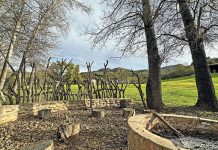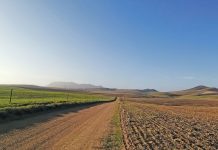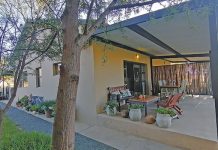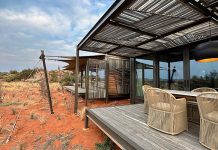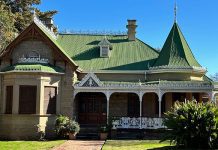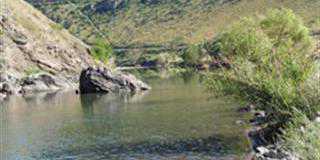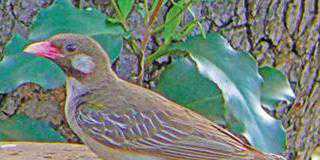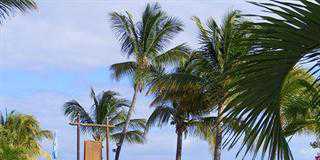“It’s still early. The rising sun is still hidden behind the hills. Behind me, the camp is starting to stir.” The year was 1959 and this is how I started the first piece I ever wrote for a publication. It was for our annual school yearbook, about the fishing holidays I spent in my last two years at a special boarding school in Kimberley.
Because most pupils, like me, came from afar, many didn’t go home for the 10-day October school holidays. So, some of the male teachers took us boys on a camping holiday to a farm near the Riverton station on the banks of the Vaal River. I’ll never forget those wonderful days beside this delightful river, brimming with life. We spent most days and part of the night fishing, but at times went rowing in the school’s old Second World War lifeboat to fill a large milk-can with river water.
This was placed alongside a tin cup in the middle of camp where everyone could quench their thirst. Although the water came straight from the river, nobody ever got sick. Sometimes we went downstream to the rapids to watch mudfish and big yellowfish flit like silent grey ghosts among the rocks as they travelled upstream to breed. Although the name “Vaal”, which means “grey” or “ash-coloured”, indicated that the river was often discoloured by runoff, the word “pollution” didn’t exist in our vocabulary, because in spring, before the rain, the water was as clear as a trout-stream.
Now on the verge of collapse
How things have changed. Today the once-healthy Vaal, South Africa’s second-largest river that sustains a quarter of the nation and Gauteng’s industrial complex, is on the verge of collapse. Few people realise that the river has become so contaminated by human excrement, acid and radioactive uranium-containing mine water, industrial effluent and toxic waste from big industries such as Iscor and Sasol.
Without the enormous addition of water from the Lesotho Highlands Water Project and the Tugela-Vaal water transfer scheme that dilutes its filthy contents, the Vaal would already have been dead and its water unfit for any kind of use. What’s most disturbing is that the demise of the Vaal, South Africa’s most important river, took place in less than one human lifetime.
Gold on the horizon
Even more hair-raising is what’s advancing on the horizon. The abandoned dumps of a gold mining industry, the fiery breath of which melted 43 500t of glittering gold from the rocks, now litter the land like huge slain dragons. Their radioactive and acidic stomach fluids spew from their mouths to contaminate the very water we must drink.
The legacy of gold mining, which at first kept the canteens and brothels of Egoli buzzing and later made the Ashanti-Oppenheimer-AngloGold-minelords of this world so filthy rich, is now finally catching up with all of us. It will seal the fate of the Vaal and bring doom to all whose lives depend on the river.
We could all live without gold and other precious minerals if we needed to, but without clean water – to drink, irrigate our crops, and even to wash with – we’d be drowning in radioactive muck. The magnitude of this gold mining effluent is simply mind-boggling. Apart from the 270 acidic tailings dams on the Witwatersrand, which cover 400km2, and contain radioactive uranium and 6 billion tons of toxic pyrite, Aurora’s Grootvlei mine pumps 70 million litres of this highly toxic brew out of its shafts every day and allows it to flow untreated into the Blesbokspruit at the Marievale Nature Reserve.
This is an internationally certified Ramsar Covention on Wetlands site and a vital part of the Vaal Barrage drainage system. This is just a drop in the bucket if we consider that under the surface there’s a massive underground ocean of similar mine water, rising steadily at 1,5m daily, ready to start decanting and soon overflow the tailings dams or flow freely into the Vaal, but also to the Limpopo drainage system.
Government turns a blind eye
A responsible government would do anything in its power to prevent its country’s most important river from going over the edge. But our ANC government is doing just the opposite. The mining department recently awarded prospecting rights for coal in at least 162 places along the Vaal River to Imperial Crown Trading.
With flagrant disregard for all laws and regulations, this act signed the death warrant for the river – and for thousands of citizens who voted the ANC into power, and will in future be condemned to drink water that will slowly kill them. And it’s not as though the department doesn’t know what it’ll do to the river. It had full knowledge of the effect of coal mining on the Olifants River, today probably the most polluted big river system on the continent.
Apart from millions of fish that have died along its course, its water has deteriorated to a point where it’s no longer fit for irrigation of crops for human consumption. The country’s largest crocodile population, which used to occur in its waters and has survived every hazard for 200 million years, is now in danger of becoming extinct. If the Vaal region is mined for coal, you can kiss the yellowfish population, which recovered so dramatically in recent years, goodbye. Pollution of the Vaal with acid coal drainage water will be a greater blow than global warming to the region and its fauna.
Before it’s too late, South Africa’s citizens must demand a coal-mining moratorium along the Vaal River and demand that a substantial portion of the taxes they pay be used for draining and treating the existing muck. Failing this, government should be charged in the World Court for crimes against humanity and the environment. If we don’t act soon, we’ll all drown in muck and be accomplices to national suicide.
Contact Abré J Steyn on 083 235 4822 or e-mail [email protected].


